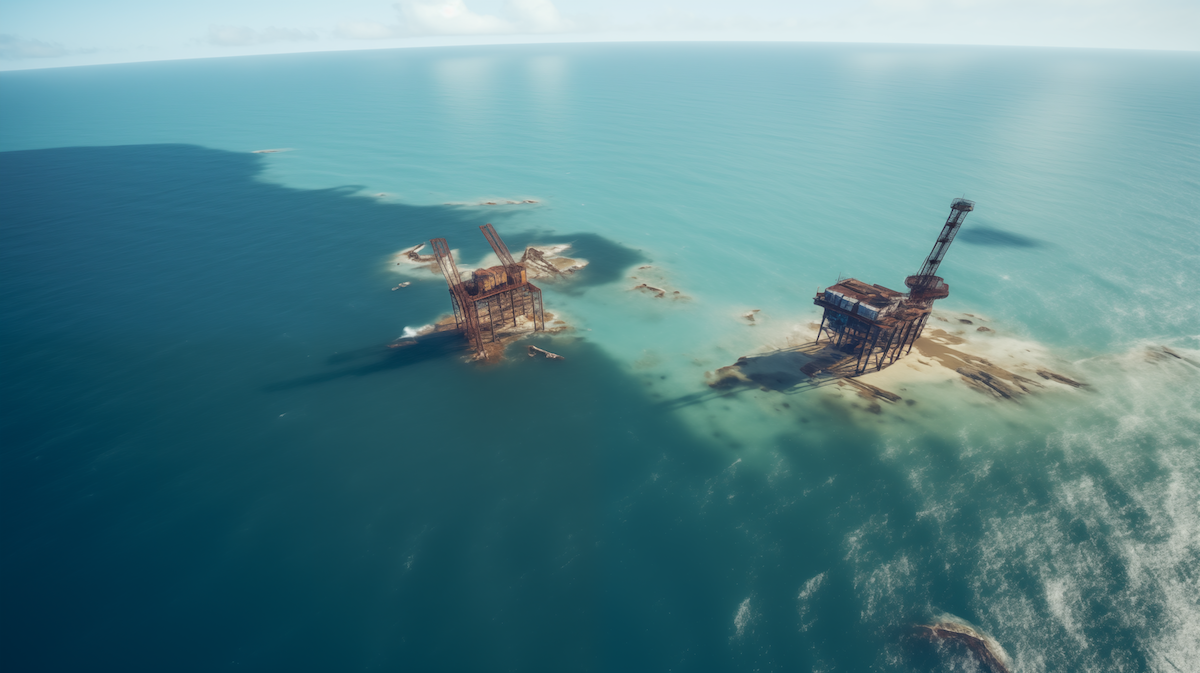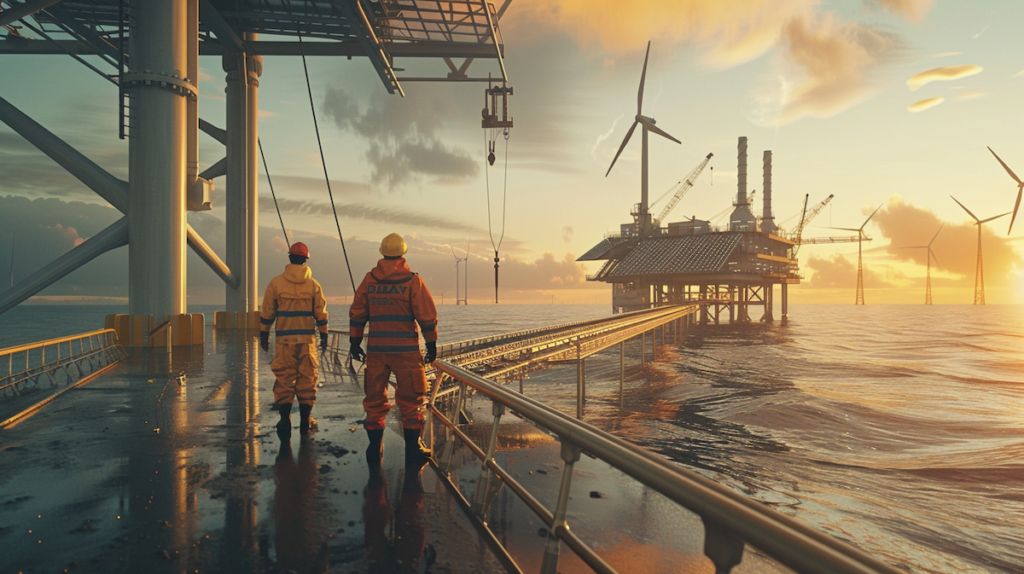
Trash to Treasure in the Gulf of Mexico
The Offshore Industry’s Expensive Trash in the Gulf of Mexico is Turning into Treasure for Innovative Energy Transition Projects
In January 2024, the United States Government Accountability Office (GAO) issued a report stating that the U.S. Department of the Interior (DOI), and its Bureau of Safety and Environmental Enforcement (BSEE) needed to “… Improve Decommissioning Enforcement and Mitigate Related Risks” related to offshore oil and gas structures in the Gulf of Mexico. The GAO referenced the current federal rules requiring decommissioning of offshore oil and gas structures and plugging wells is generally required within 1 year of the end of an offshore lease, or when the structure is “no longer useful for operations”.
The GAO report references the regulatory and industry failures to meet these decommissioning deadlines due, in part, to the fact that 37 offshore oil and gas operators have filed for bankruptcy since 2009. These defaults have created financial exposures involving “tens of millions of dollars per lease in shallow water and upwards of hundreds of millions of dollars per lease in deep water.” The vast majority of these structures are located in the federal waters of the Gulf of Mexico (GOM).
In response to the GAO’s report, the DOI’s Bureau of Ocean Energy Management (BOEM) recently amended its risk management and financial assurance regulations and acknowledged that BSEE’s probabilistic estimates of decommissioning costs were being finalized. The DOI’s overall goal for these new regulations is to protect “… the American taxpayers from exposure to financial loss associated with OCS development, while ensuring that the financial assurance program does not detrimentally affect offshore investment or position American offshore exploration and production at a competitive disadvantage.”
The BOEM regulations also clearly state that if current operators are unable to fund decommissioning, the co-lessees and predecessors in interest (PII) lessees are responsible for all decommissioning obligations that accrued before the predecessors assigned their interest to subsequent parties. In other words, solvent co-lessees, operators and PII’s cannot avoid these substantial financial obligations that may become more expensive over time. BOEM has also indicated that it would not be restricted to pursuing PII lessees in “reverse chronological order.”
The significant number of offshore structures in federal waters of the GOM that are either due, or overdue, for decommissioning is both staggering in number and financial costs, which is why US offshore regulators are focusing on more effective ways to solve these financial problems. However, some of this infrastructure which is at the end of its oil and gas production may be suitable for repurposing for energy transition projects involving generation of Green H2 or for subsurface CO2 injection and monitoring.

The University of Houston Repurposing Offshore Infrastructure for Clean Energy (ROICE) Project is an industry/educational program, funded by the US Department of Energy Fossil Energy and Carbon Management program, which is analyzing hundreds of offshore structures in the federal waters of the Gulf of Mexico that can be repurposed for Green H2 production or CO2 injection/monitoring. The ROICE Program is working closely with industry members, as well as federal regulatory representatives, to create techno/economic analytical criteria, operational procedures and regulatory-compliant commercial programs for repurposing existing offshore structures for Green H2 production or CO2 storage.
Following structural and engineering analysis and acceptance, these structures would undergo initial partial decommissioning (removal of hydrocarbon processing and other non-essential equipment, some well plugging/abandonment) that will substantially lighten the structures and should extend their work life. For the operators and PII of repurposed structures, the commercial and financial benefits would be tangible and regulatory compliant.
Following partial decommissioning of non-essential equipment/wells, the repurposed H2 generation or CO2 storage facility would likely have a work-life of 20-25 years. The ROICE commercial operating structure envisions the participation of current operators, PIIs and/or investors, who would share the benefits of IRS 45 V or 45Q tax credits. The risk/insurance exposure for operating a ROICE project would be significantly less than an offshore hydrocarbon facility. In addition, the asset retirement obligations of the operator and PII for the final decommissioning of the transitioned structure may be delayed up to 20 years, or more, in suitable transition projects.

ROICE and BOEM, in conjunction with some substantial geophysical input from the University of Texas Bureau of Economic Geology (UTBEG), have identified a number of extraordinarily large subsurface structures that could be used for CO2 storage that may actually “move the needle” relative to both international (IEA) and US concerns about CO2 reduction and climate change. The majority of these subsurface structures are saline aquifers that are more suitable for CO2 storage than depleted oil and gas reservoirs that may contain existing plugged/abandoned wells that cannot tolerate increased pressures resulting from CO2 injection.
Further, the clear ESG nature of these ROICE repurposing projects should attract the private equity and venture capital funds with investments in CO2 projects on land or in state waters that are currently suffering significant delays in federal and/or state regulatory approval. The EPA UIC Class VI regulatory review process for CO2 injection/monitoring exists to protect safe drinking water aquifers from contamination due to CO2 exposure. Because the US does not currently utilize such aquifers in the federal waters of the Gulf of Mexico, it is unlikely that the current EPA review and approval requirements would be applicable to ROICE CO2 injection/monitoring projects in federal waters. In addition, subsurface CO2 injection/storage in the Gulf of Mexico does not implicate legal exposures resulting from subsurface migration or pore space ownership that exist on land-based projects in Texas and Louisiana.
Clearly, some technical and logistic challenges remain, including midstream capability to transport H2 or CO2 in a semi critical state. Currently, the offshore and onshore energy sectors are considering repurposing, or constructing, pipelines with internal composite linings to withstand the corrosive or embrittlement hazards arising from H2 or CO2. The US Department of Transportation’s Pipeline and Hazardous Materials Safety Administration is considering these midstream issues, relative to CO2 and hydrogen transportation.
The ROICE Program is a joint venture with industry and regulators to create repurposing strategies that provide tangible technical, economic, commercial, regulatory and environmental benefits. We would welcome your input about the ROICE Program’s plans to safely and cost-effectively turn the offshore oil and gas industry’s trash into repurposed energy transition treasure.

* All images created using ai
Glenn Legge is a lawyer licensed in Texas, New York and California, who has spent 40 years representing and supporting offshore operators, contractors and service companies in the US GOM and abroad. His firm, Legge Farrow/HFW USA, represented/assisted target defendants in the Deepwater Horizon (DWH) multi-district litigation matter, supported the introduction of the first FPSO into the US GOM, helped create and operate the Marine Well Containment Company following the DWH catastrophe, provided legal and regulatory support for the first major hull remediation of a TLP on location in the US GOM and provided regulatory and risk analysis for the first deepwater prospect in the Mexican waters of the GOM. Glenn is currently serving as a senior consultant for Endeavor Management, where he is leading the Endeavor Energy Transition team on innovative commercial, operational and regulatory projects, including a lead industry role in the University of Houston ROICE Program.
Let’s Talk
We will help you overcome strategic challenges to realize the business value you seek.

